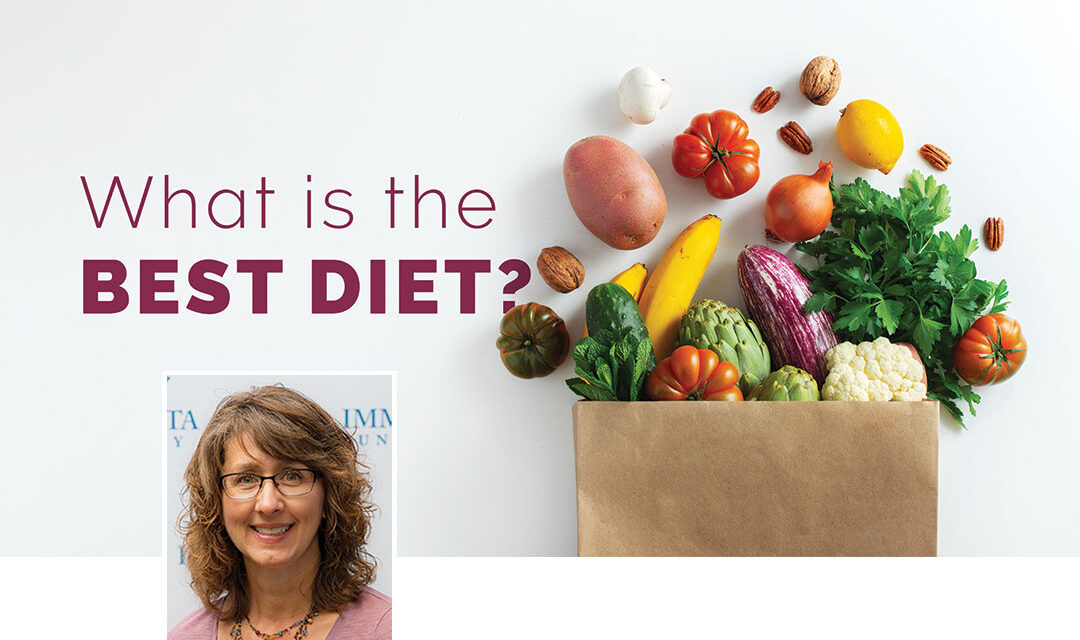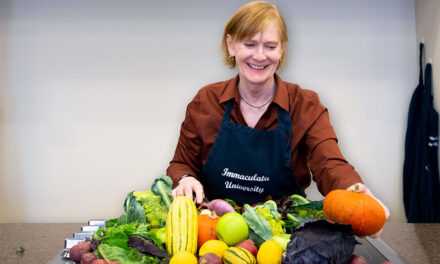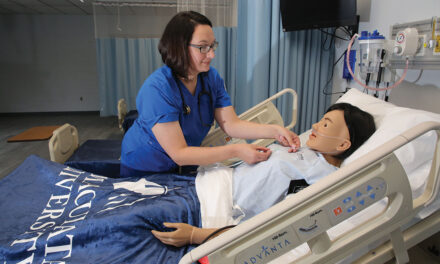Dietitians are often asked this question, and diets are the main tool we use to treat everyone from infants to professional athletes. The term “diet” has a couple of different meanings. It can be used to represent a restrictive and temporary style of eating for a variety of reasons, including weight loss, health or medical issues. “Diet” more broadly, however, refers to all the foods that a person or a community consumes long-term or throughout life. Some examples are social dietary identities such as vegetarianism, along with cultural and religious dietary practices, for example eating traditional grains such as quinoa or cassava, and practicing kosher or halal. The best diet should take into consideration these definitions along with other factors.
All traditional diets of the world emphasize a foundation of plant-based foods: whole grains, nuts and seeds, plant oils, fruits and vegetables and other foods that provide adequate nutrients. In addition to this foundation, different indigenous ingredients, herbs and spices are used to create the unique flavors and tastes of different regions and cultures in the world.
In the United States we have generally moved away from traditional diets. Unofficially, our average diet is called the Standard American Diet, or SAD for short. When we compare the modern-day American diet to traditional styles of eating, there are some stark differences. Whereas traditional diets are largely plant-based, the Standard American Diet is heavy on meat and processed carbohydrates, high in sodium and sugar, low in whole grains and low in fruit and vegetables. Just to clarify, French fries don’t count as vegetables. Labeling the typical American diet as SAD is ironic when we look at correlations between diet and how it impacts our short-term health, chronic disease risk and overall longevity and quality of life.
As a registered dietitian with experience in clinical care, community work and private practice, I have seen the SAD way of eating far too often. Our society thrives on quick fixes, short-term solutions and convenience. Despite an overabundance of affordable, low-quality food, as well as a challenging food environment for certain populations, the best diet is more possible than many realize.
So, what is the best diet? The best diet takes into consideration both traditional dietary practices and the Standard American Diet. The best diet emphasizes plant-based foods and minimizes meat and other animal-based foods, but it is not necessarily plant-exclusive. It satisfies individual likes and taste preferences, while at the same time providing enough calories to satisfy the appetite and to help one remain at a healthy weight and have the energy to stay active. The best diet includes a variety of natural foods that cover all the food groups (grains, fruits, vegetables, meats and beans, dairy) to provide the essential nutrients (vitamins, minerals, plant chemicals). It doesn’t rely on processed, packaged or refined foods such as white flour or sugar, but occasionally consuming sweet or refined foods, like cookies, ice cream or white bread, is not off limits. The best diet is flexible and one where you choose from the best natural ingredients.
The best diet is also balanced and forgiving; there is no penalty if one doesn’t eat something specific or adhere to strict portion control, and there is no punishment for eating more on some days compared to others, for example consuming fewer grains one day and more vegetables the next. It isn’t a mind game, and the result isn’t about how validated one feels from eating certain foods. The best diet is one that is easy to sustain long-term and contains no restrictions, crazy rules or special supplements.
No matter one’s health goals, following the best diet is easier to attain than many believe. Prioritizing plant-based foods doesn’t mean one has to give up favorite foods, meat or the occasional sweet indulgence. Instead of attempting short-term, quick fixes through a temporary or unsustainable diet, consider eating the best diet.







